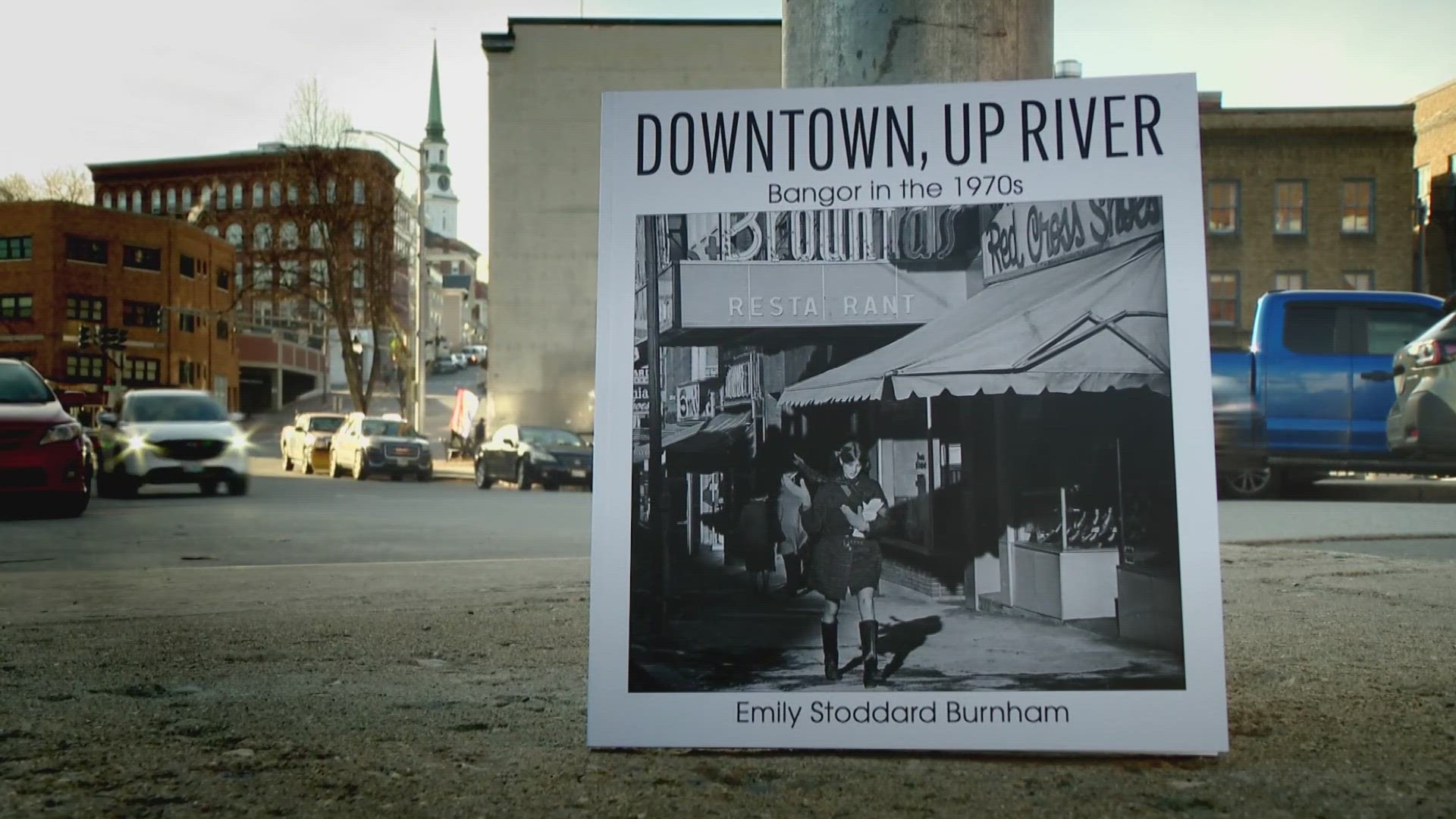BANGOR, Maine — One of the first photos in the new book "Downtown, Up River: Bangor in the 1970s" shows two young women, almost certainly teenagers, who pumped gas at that time at a Mobil station on State Street. Their work uniforms are wonderfully ridiculous: snappy Mobil golf hats, short skirts, and sleeveless white shirts.
Yes, sleeveless white shirts. And this was an era when gas station attendants regularly checked your car’s oil and put in a quart if needed. Apparently, company executives were unconcerned that white doesn’t exactly hide grease stains.
"Downtown, Up River" contains more than 100 photos, nearly all of them from the archives of the Bangor Daily News, showing the buildings, signs, cars, street scenes, hairdos, clothes, and people that gave the city its distinctive '70s look. Flip through the pages and you’ll see images of a vanished era: people lining up for a screening of "Blackbeard’s Ghost" at the Bijou theater, shoppers pouring into Freese’s department store, musicians performing on the TV show "Dick Stacey’s Country Jamboree."
Emily Burnham, who grew up in Searsport and has been a reporter for the Bangor Daily News since 2004, wrote the book and selected the photos. Burrowing into the newspaper's archives and looking through thousands of pictures was, for her, more pleasure than work.
"I’ve always thought that history is something that doesn't exist just 100 years ago or 150 years ago," she said. "It’s something that's happening right around us as we speak."
What drew her to the subject of the 1970s was the change that reshaped the city, notably the demolition of dozens of old buildings downtown for what was then known as urban renewal. The idea was that those aged structures would be replaced by new buildings that would revitalize the city.
That shiny vision was never realized. The money for new construction didn’t come through, leaving downtown with acres of empty lots. "It has taken decades of effort by local people to rebuild what it took only a few years to destroy," Burnham noted.
"Downtown, Up River" offers a delightful trip to another time and place, regardless of whether one knows Bangor intimately or not at all. We may chuckle at the bouffant hairdos and mutton chop sideburns, the miniskirts and double-knit pants, the barber giving haircuts for $1.75 and the guy walking down Main Street carrying an unclothed mannequin. It all looks different—and yet it all looks familiar.
"At the end of the day, we’re all the same," Burnham said. "At the end of the day, people are people."

